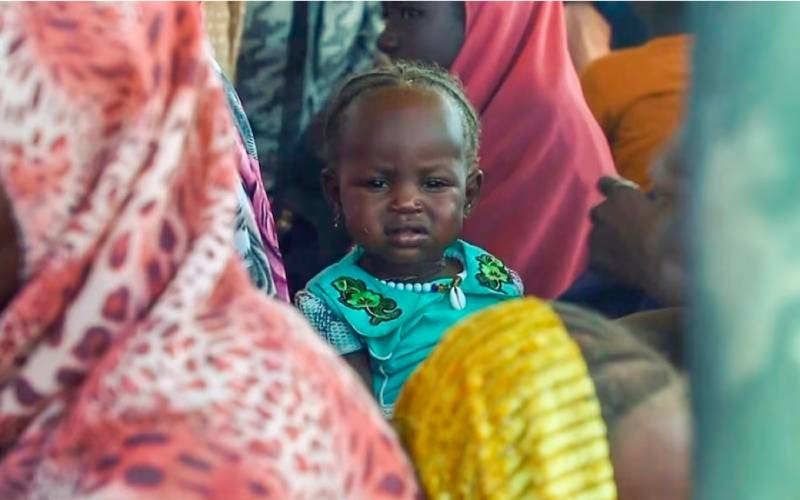By Philip Mwakio
The International Maritime Organisation (IMO) and shipping industry players have united in seeking United Nations’ response to piracy and release of hostages held in Somalia.
Among those being held are 45 Kenyan seafarers. Thirty-nine are onboard a Kenyan flagged fishing vessel FV Golden Wave which was hijacked in Kenyan territorial waters and commandeered into Somalia early last month. Six other Kenyans whose vessel FV Tai Yuan 7 was taken hostage on May 6.
Support from the United Nations Secretary-General Ban Ki-Moon to secure the release of hostages seafarers currently being held by pirates in Somalia has been sought via a letter jointly signed by IMO secretary-general Efthimios Mitropoulos and heads of international shipping and seafarer organisations.
It asked Mr Ki-Moon to draw the attention of the Security Council to the unacceptable plight of the 395 hostages currently being held by pirates in Somalia and seek to develop a dynamic approach that might secure their release.
"In this, the Year of the Seafarer, your early positive response to our request will be greatly appreciated by the world’s seafarers and the international maritime community," the letter said. The document was drafted following the July 14 meeting of shipping industry organisations and representatives of seafarer organisations held at IMO.
The meeting was also attended by Mr Marianito Roque, until recently secretary of the department of labour and employment in the Government of the Republic of the Philippines — a country that supplies approximately 25 per cent of the world’s seafarers and whose nationals have been the principal victims of acts of piracy and consequent hostage-taking, particularly in waters off the coast of Somalia.
The letter to Mr Ki-Moon noted that the IMO council decided, at its 104th session in June, that the theme for World Maritime Day 2011 and, thus, the thematic priority for the organisation and the shipping industry throughout next year, should be "Piracy: orchestrating the response".
ELIMINATING PIRACY
Notwithstanding the various and multi-faceted efforts made to address the scourge of piracy and the relative success they are having, especially with respect to averting attacks on cargo ships chartered by the World Food Programme to carry humanitarian aid to Somalia, the IMO Council has recognised that much work still remains to be done if the ultimate goal of eliminating piracy is to be achieved. The letter notes that the IMO council chose the 2011 World Maritime Day theme in order to galvanise, throughout the year and beyond, further action aligned to a number of key objectives which includes increasing pressure at the political level to secure the immediate release of all hostages being held by pirates, providing care for those attacked or hijacked by pirates and for their families
Meanwhile, Somali pirates last week hijacked a tanker, the European Union anti-piracy taskforce has said.
The taskforce, EU Navfor, said gunmen attacked the MV Polar, a 72,825 tonne Panama-flagged tanker with 24 crew members, overnight in the Somali basin and the owner had confirmed pirates were now in control of the vessel. Key meeting starts in Nairobi today to drive regional infrastructure development and seek funding for development of major transport corridors.
Countries from Eastern and Southern Africa (ESA) region meet to discuss strategies and funding for development of infrastructure.
East Africa Community, Common Market for Eastern and Southern Africa and Southern African Development Community have organised the Infrastructure Development Conference to seek funding for development of major transport corridors.
The event is themed "Linking up Eastern and Southern Africa for sustainable economic development and best practices in private sector opportunities."
Stay informed. Subscribe to our newsletter
It would be characterised by presentations and plenary discussions on a number of topics including projects and programmes within the tripartite arrangement, infrastructure developments, public-private partnerships, and business opportunities for Small and Medium Enterprises (SMEs) in infrastructure.
Key among the gains expected from the two-day conference are funding commitments by the donor community for pre-feasibility and feasibility work that would be needed for development of Aid for Trade programmes along major transport corridors in the ESA region.
In addition, it is envisaged the meeting will result into partnerships between regional SMEs and companies from Europe that are geared towards the promotion of projects and services in the infrastructure and related sectors.
The EAC Director for Planning and Infrastructure Philip Wambugu said the event would be the first where special attention would be given to the roles that SMEs can play in the provision of infrastructure services in the region.
SOLUTION PROVIDERS
It would look at roles of SMEs in engineering and design, construction, transport, logistics, management and operation of infrastructure facilities.
Key industry leaders and solutions providers from the region and beyond are expected at the Conference.
Poor infrastructure lies behind many of the barriers to trade in the region.
Transport costs in Southern Africa are on average nearly 75 per cent higher than in Europe and up to 40 per cent more than in other developing countries.
In view of current global financial and business realities, the Conference will seek to distinguish itself from the many similar events that regularly take place by focusing on key infrastructural sectors and business opportunities.
Priority will also be given to those that best fit its objectives of highlighting the role of private small and medium enterprises as primary investors and subcontractors whose activities promote trade and enhance regional integration.
REGIONAL TRANSPORT
Last month, EAC member states met in Arusha under the umbrella body "East African Transport Strategy and Regional Road Sector Development Strategy where a team of consultants presented a regional transport status quo, as well as a projection of how this will evolve and the interventions required to facilitate regional transport over the next ten years. The workshop provided a platform for regional stakeholders to critique and amend the strategy, whose objective is to identify regional strategic priorities and resources for transport sector development and operational needs for the medium term.
The project is divided into two parts: the EAC Transport Strategy and the EAC Regional Road Sector Development Program.
 The Standard Group Plc is a
multi-media organization with investments in media platforms spanning newspaper
print operations, television, radio broadcasting, digital and online services. The
Standard Group is recognized as a leading multi-media house in Kenya with a key
influence in matters of national and international interest.
The Standard Group Plc is a
multi-media organization with investments in media platforms spanning newspaper
print operations, television, radio broadcasting, digital and online services. The
Standard Group is recognized as a leading multi-media house in Kenya with a key
influence in matters of national and international interest.
 The Standard Group Plc is a
multi-media organization with investments in media platforms spanning newspaper
print operations, television, radio broadcasting, digital and online services. The
Standard Group is recognized as a leading multi-media house in Kenya with a key
influence in matters of national and international interest.
The Standard Group Plc is a
multi-media organization with investments in media platforms spanning newspaper
print operations, television, radio broadcasting, digital and online services. The
Standard Group is recognized as a leading multi-media house in Kenya with a key
influence in matters of national and international interest.








